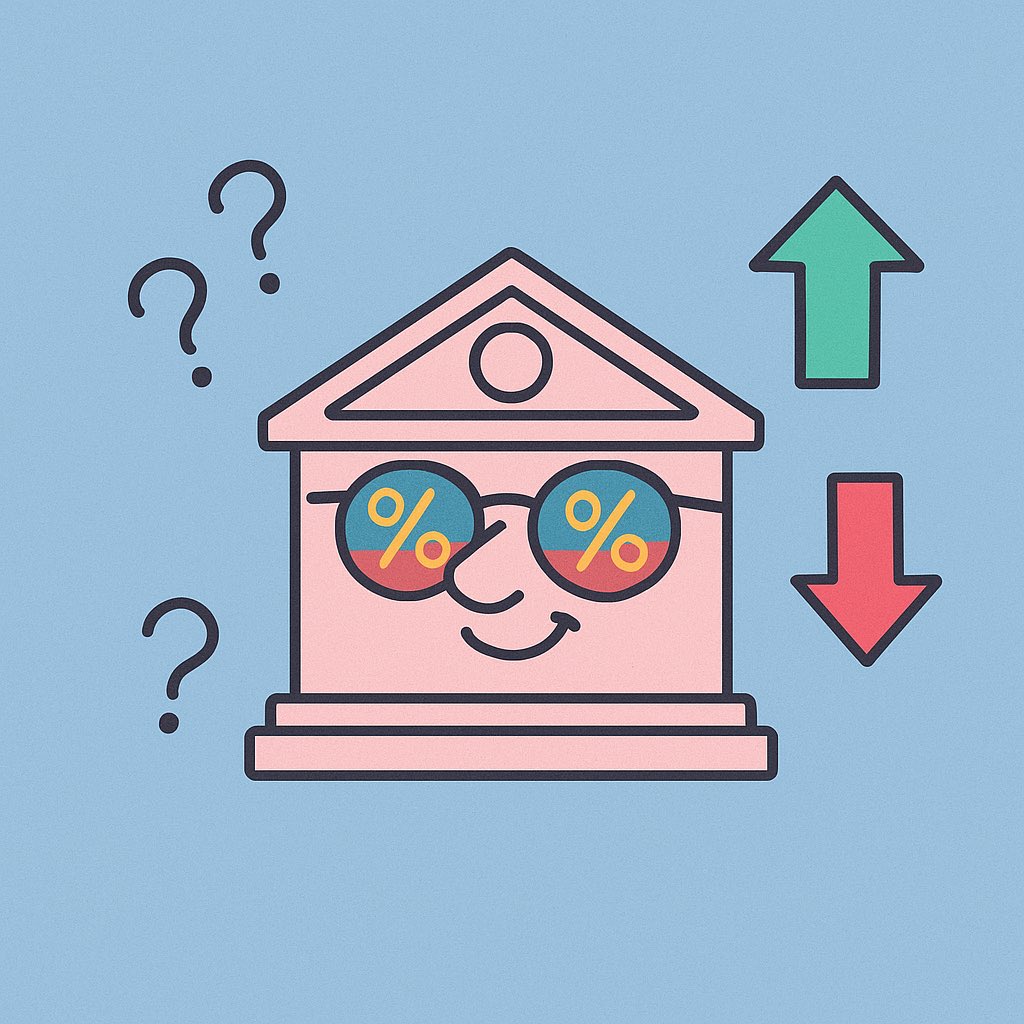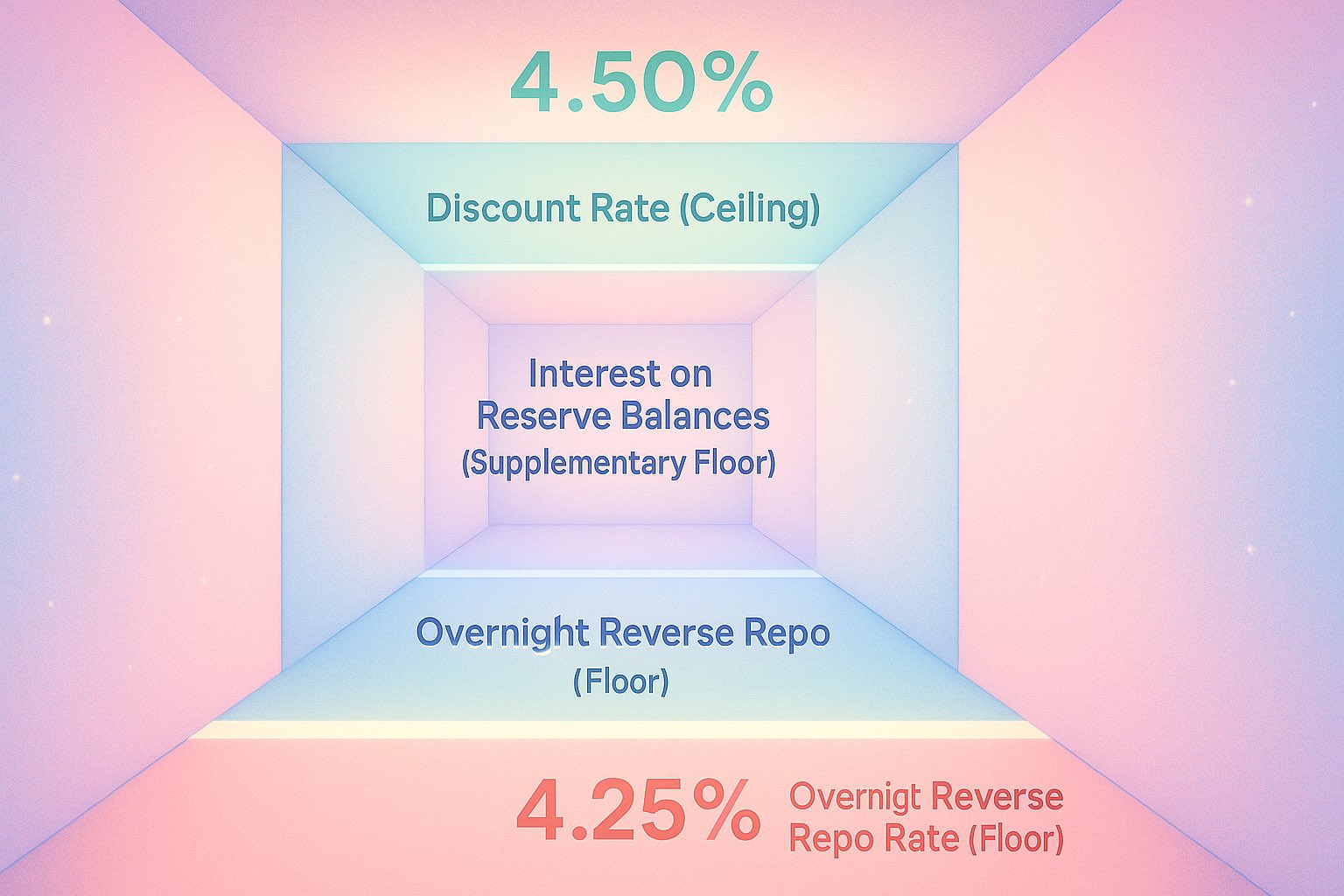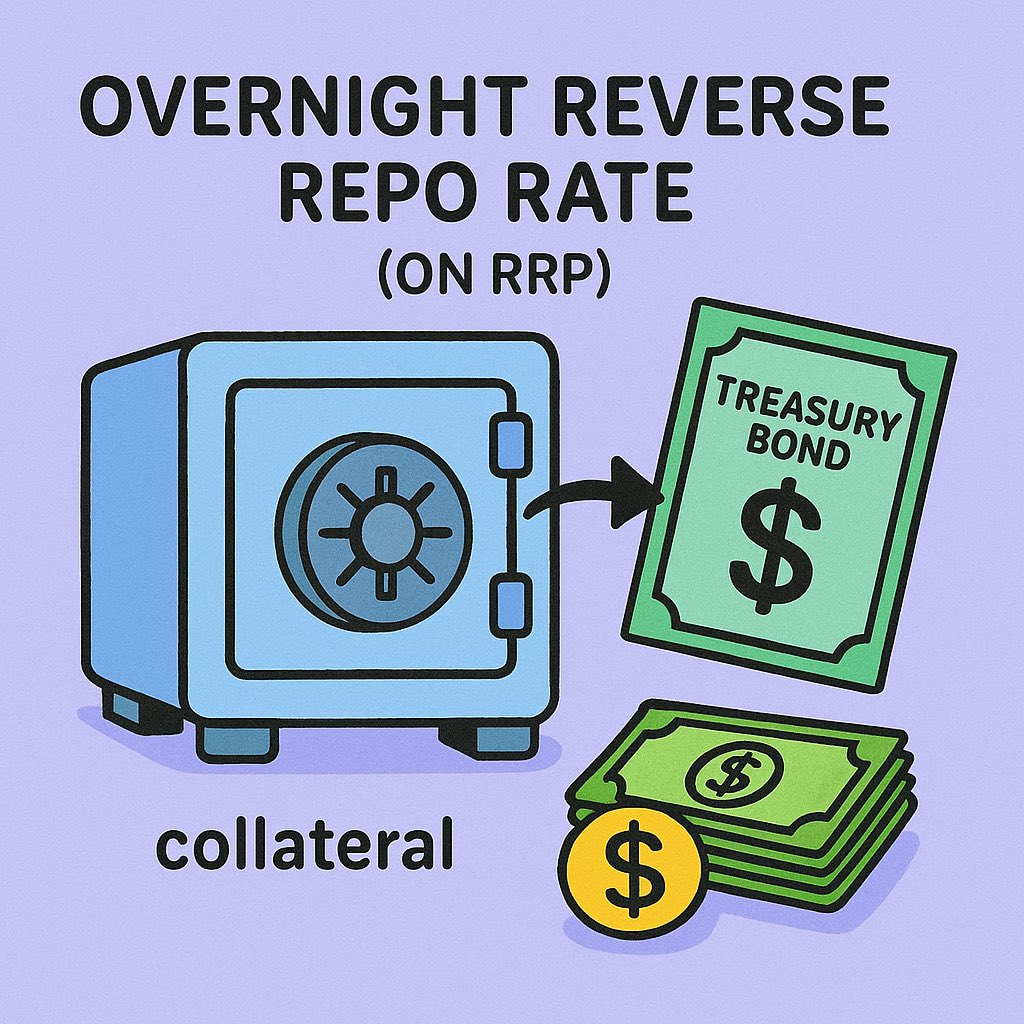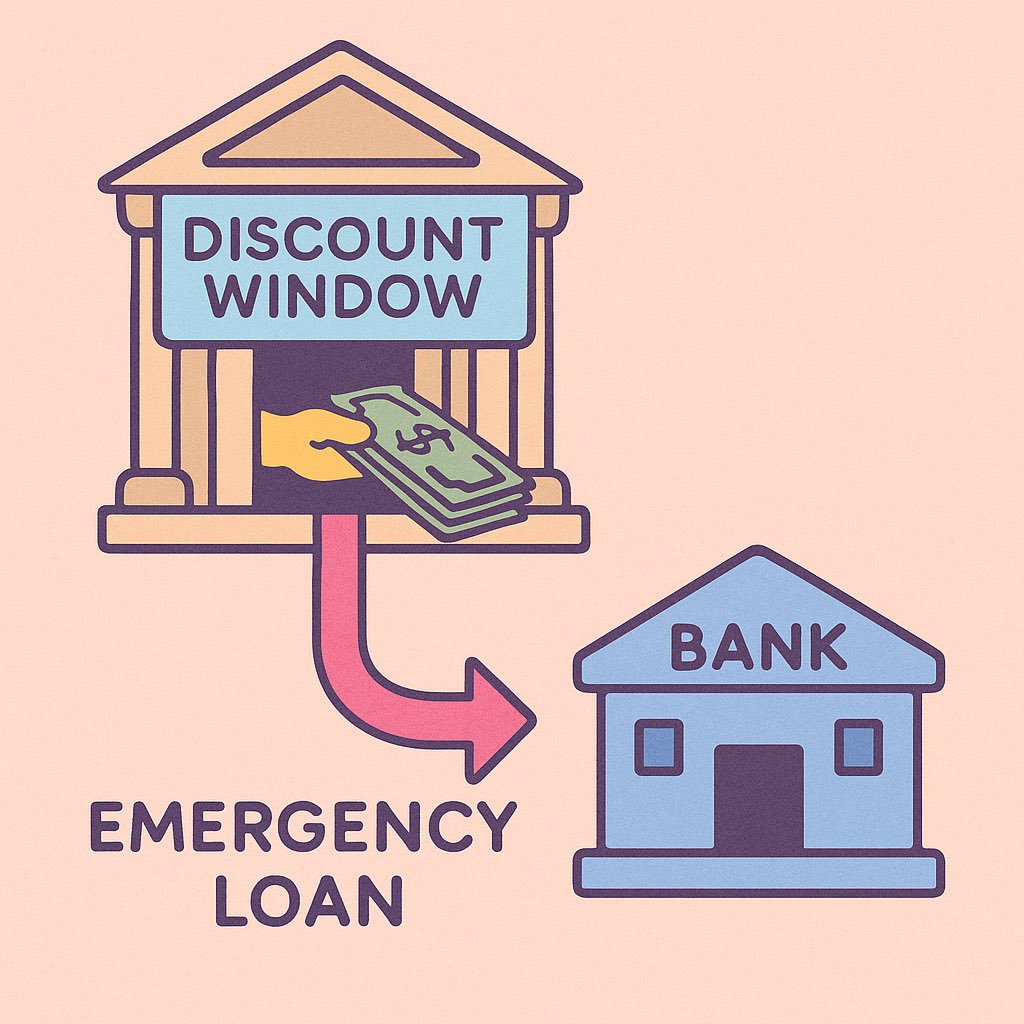
How Does the Federal Reserve Set Interest Rates?
how can the FED even set market-wide rates? 🤔
after all - there is no single rate that the whole market unanimously uses
different types of lending have different rates in the market, as it's a (somewhat) open market
the federal reserve does not set a single interest rate
instead, the FED sets a target interest rate range (the federal funds target range) alongside 4 main explicit interest rates
the FED sets a target interest rate range and 4 main explicit interest rates:
1️⃣ Overnight Reverse Repo Rate (ON RRP)
2️⃣ Interest on Reserve Balances (IORB)
3️⃣ Discount Rate - also known as Lending Rate
4️⃣ Standing Repo Facility (SRF)
more on them later (keep reading 😁)
the rates define the interest rate corridor in the following manner:
1️⃣ Overnight Reverse Repo Rate - floor
2️⃣ Interest on Reserve Balances - supplementary floor
3️⃣ Discount Rate - ceiling
4️⃣ Standing Repo Facility - supplementary ceiling
in the Federal Open Market Committee Meetings (FOMC), the Federal Reserve sets a target range - currently 4.25%–4.50%, and then it uses the ON RRP, IORB, discount rate and SRF to steer the average rate in the market
think of these 4 rates as defining a corridor with an upper and a lower bound - currently 4.25% and 4.50%
the average market interest rate will sit somewhere in between
now you should have a clear mental model of how the Federal Reserve sets the interest rates in the market
a target range is defined, and then several different interest rates are set explicitly to steer the real interest rate into that target range
so when banks and other financial institutions need to lend capital - they can do it at a rate within the target range
of course, their balance sheet capacity must allow for that - but that's another topic which I already covered in some detail in my other posts😁
now let's understand each one of the 4 key rates set by the federal reserve to keep the market rates within the target range
namely, what each one of those rates represents and how together they act as ceiling or floor for the interest rate corridor
the 4 key interest rates set by the FED are:
1️⃣ Overnight Reverse Repo Rate (ON RRP)
2️⃣ Interest on Reserve Balances (IORB)
3️⃣ Discount Rate - also known as Lending Rate
4️⃣ Standing Repo Facility (SRF)
we'll cover them in this order below
Interest on Reserve Balances (IORB) is the rate FED pays banks on their excess reserves
commercial banks have reserve accounts at the FED. regulations define the minimum amounts - any excess earns the IORB interest rate set by the FED
since banks can always deposit cash into their reserve account account at the FED and earn the IORB rate they have little incentive to lend at rates below IORB
effectively, this sets the floor (lower bound of the corridor) for interest rates for banks
ON RRP further reinforces the the floor for the market-wide interest rates
since it's accessible to a broader set of financial institutions - not only banks. those now also have little incentive to lend below the ON RRP rate
the majority of liquidity is actually created in wholesale short-term debt markets
ON RRP addresses exactly that sector, thus setting the lower bound of the target interest rate corridor for the broader financial sector
the discount rate is set higher or at the typical market rates to disincentivize its use
it's really meant to serve as an emergency lending source - only when other financing routes are exhausted: regular interbank markets, wholesale markets and SRF among others
it't called discount window for historical reasons
discounting means buying treasuries at a slightly lower price - i.e. at a discount
window comes from the fact that these were sold at counter/teller windows at the bank
Standing Repo Facility (SRF) allows banks & other financial institutions to do collateral-backed loans from the FED overnight
the institution provides high quality collateral (e.g. treasury bond) and gets a loan against it - at the set rate
thus, Standing Repo Facility (SRF) further reinforces the upper part of the target interest rate corridor
in other words, it strengthens the cap on short-term interest rates
SRF has been introduced in 2021, due to occasional spikes of short-term funding rates outside of the corridor
this is because banks avoid using the discount rate - as that is often seen as a sign of financial distress by the broader market
so how does the FED currently targets an interest rate range between 4.25%-4.50%?
let's consolidate everything with an example using current, real-world data
current rates set by FED:
1️⃣ ON RRP - 4.25% (floor) - firms won't lend below
2️⃣ IORB - 4.40% (supplementary floor) - banks won't lend below
3️⃣ Discount Rate - 4.50% (ceiling) - banks won't borrow above
4️⃣ SRF - 4.50% (supplementary ceiling) - banks & firms won't borrow above
together, ON RRP, IORB, Discount Rate and SRF create a corridor for rates, which stay within the target 4.25%-4.50%
👉 by "firms" i mean select non-bank financial institutions - think dealers, market makers & other wholesale debt institutions




